By Daniel Reyes
Last October, from the weekend of the 26th to the 28th, I went to a conference at the MIT Media Lab in Boston: the Biosummmit. It was different from any other conference I had attended so far as it included artists, biologists, educators, screenwriters and activists, all under one common idea: to make science more accessible, and to change the world’s view on science! This diverse community of people call themselves DIY biologists or biohackers, which are people interested in concepts of biology and biotechnology, as well as working on open access labs. It is all about sharing knowledge, making it accessible to the public, and doing science!

Figure 1 MIT campus
What makes the Biosummit different from other conferences? Well, it focuses on collaborating and exchanging knowledge, which means that anyone who wants to share their projects, techniques, results, or even make contacts and attract collaborators is welcome to book a time and space in one of the teaching labs to either conduct a workshop or lead a discussion panel. I personally assisted in workshops on plant propagation and how to build microscopes using different materials, such as pre-cut wood and cardboard. I also had the chance to lead a discussion panel about ecology and biodiversity in the context of the DIY community and how the community is thinking about solving those issues. The main events of the summit were a series of panels of discussion on different topics related to the DIY community with different experts on ethical issues in science, or how scientific findings currently influence the public.
At the beginning of each day, before the panels and the workshops, a session called “Hello World” allowed all attendees to present themselves and their work in 1-minute presentations. This was a great way to get introduced to everyone. I met people working on making lab equipment cheaper and open source, with ideas such as a fully functional foldable microscope inspired by origami techniques. I also met artists who use biological concepts as part of their art, such as obtaining pigments from bacteria or using algae as an alternative material to plastic. There were also people from the media, actors, and producers who were inspired by the community and wanted to portray a more accurate and human angle of science and scientists. It was incredible to observe so many people eager to share their knowledge and learn from each other.

Figure 2 Different projects on the Biosummit: Drawings using bacterial pigments. Polymers made from algae as an alternative to plastics. Making lab equipment accessible and open source, a centrifuge, PCR machine and incubator. Plant propagation workshop, organized in the Media Lab

Figure 3 Panel of discussion with actors and producers from Sci-Fi shows and how they influence the perception of science in the media
The conference’s main goal was to establish a common objective for the DIY community based on the idea of sharing knowledge by giving access to equipment and a space to do science projects of interests to the community. Personally, I learned about the multiple ways through which science can be used to create a meaningful impact. In addition, I learned that technology is the tool, but wisdom is necessary to use those tools correctly and we can only solve the world’s current problems by using both.
I appreciated the way artists portrayed the theories of evolution, biodiversity, and developmental biology in a more artistic way, which inspired me to explore new ideas… I think an artistic view of those theories could have a meaningful impact on the ways that we perceive nature and on our respective roles towards it. The Biosummit was a different, refreshing, and inspiring event, and I hope that I have convinced you of the need to employ creativity in scientific research and techniques.
If what I mentioned in this article appeals to you, that’s good news! Anyone can get involved! There are various community labs that are working on several projects, right here in Montreal. Currently, I am part of a team at Bricobio where we work with materials such as kombucha and fungi to create leather and other cool things! Or, you can visit Foulab every Tuesday at 8pm!

Daniel Reyes-Corral is a PhD student from the Hendry Lab at McGill University in Montreal. He is interested in the origins of phenotypic traits and their evolution. He works on the evolutionary interactions of a plant species, Tribulus cistoides and Darwin’s finches in Galapagos. He also advocates for science communication and outreach.

0 Comments